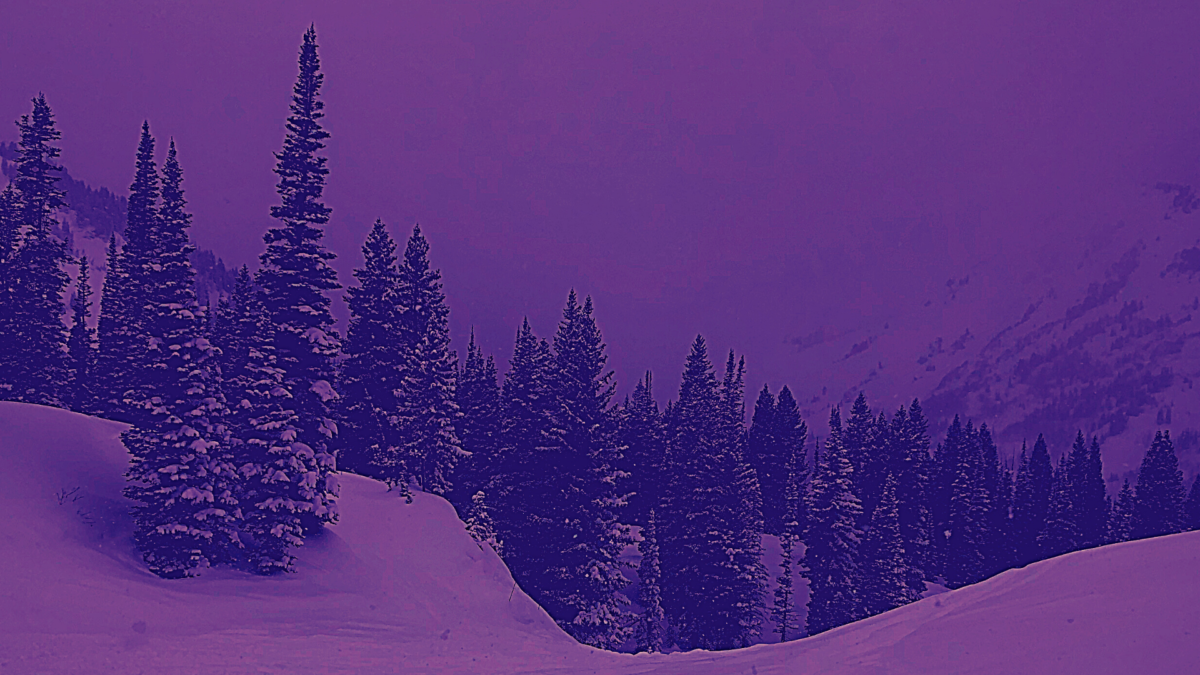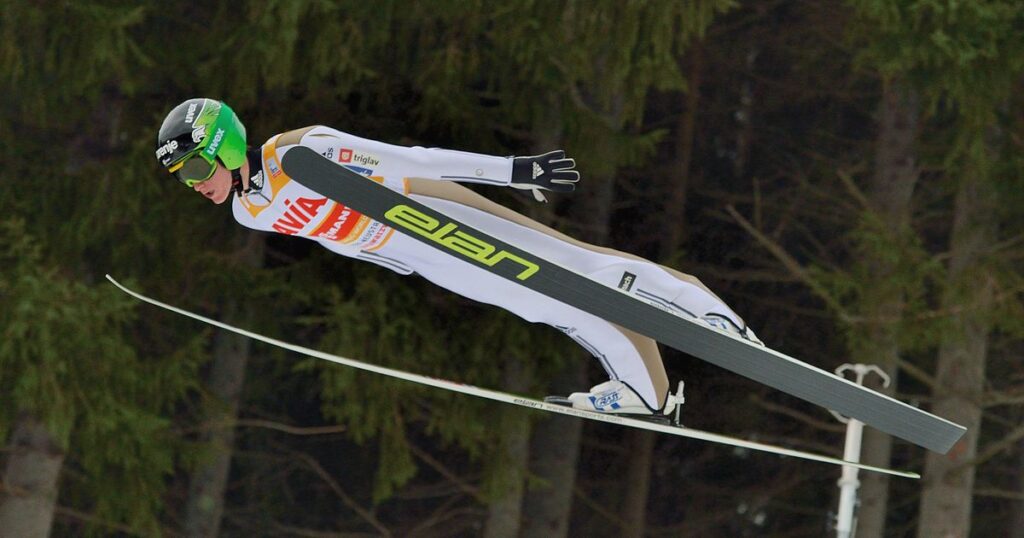
(Photo: Wladyslaw Sojka, Public Domain)
INTRODUCTION:
Ski jumping is what happens when men spend too much time together. Ski jumping can be defined as a sport where a person with skis is riding down a hill to jump as far and elegantly as possible. The origins can be found in Norway, where the military was using skis during the late 18th century. Many soldiers therefore learned how to ski while serving the military. During breaks or excursions, the idea of skiing down a hill and jumping over a small ramp emerged. In 1808 Lieutenant Olaf Rye jumped 9.5 meters on skis with the help of a hand-built pile of snow. This is widely regarded as the first ski jump of history. Nowadays men and women are jumping off artificially built hills. The largest ramp is 133 meters (436 feet) long and jumpers take off at 108 km/h (67 miles/h). The current world record is 253.5 meters, which is held by the Austrian Stefan Kraft, who made the jump in Vikersund in 2017. Within 200 years many things changed. The three main factors that lead to reaching those distances are materials, techniques, and larger jumping hills.
MATERIAL:
The first ski jumps were made in military uniforms, wooden skis, and leather shoes. Material development within ski jumping heavily depended on the advances made for commercial skiing. As the skiing industry grew post World War II, companies invested more into new technologies and mass production. This benefited ski jumpers because it was easier to gain distance with modern skis. The next significant improvements were shoes and bindings during the 1960s and 1970s. Those shoes were only manufactured for ski jumping and included a little clip at the back of the binding. The direct impact on distance was limited but the new technologies made jumping safer. Hence, jumpers felt more confident to do riskier jumps, which lead to further distances.
The most important technological advance to ski jumping can be found in the early 90s. The width of the skis increased, which helped jumpers to increase their wind buffer leading to longer jumps. At the same time the binding was made a little more flexible and adjusted to the new skis. During the early 2000s small adjustments to the suit improved aerodynamics. Within the last 10 years many jumpers tried different variations of the clip binding in order to gain an advantage, while the general technology is the same.
Nowadays all possible changes are tested in the wind tunnels. The greatest room for adjustments is within the gloves and the suit. However, the FIS became stricter with the regulations over time as the teams tried to find loopholes to gain advantages. The reason for that is the impact very small changes can have on the distance. The current equipment guideline by the FIS states that shoes can´t be higher than 45mm and shoes cannot exceed the foot length by more than 2cm. The skis are allowed to be up to 145% of the athlete´s height and the width has to be between 95mm and 105mm at all parts. Furthermore, the weight to cm ratio has to be 10g/1 cm. The suit has to be between 4 and 6mm thick and has specific measurements around the neck and wrist. The binding and clip are not allowed to exceed 70mm height. Moreover, the binding has to be positioned that maximum 57% of the ski length is in front of it. This short summary of the current regulations shows how large the advantage can be when using material outside the norms. Hence, the development of material played a big role for jumpers reaching these distances.
TECHNIQUE:
The jumping technique changed over time and had an influence on distances. Olaf Rye´s jumping technique was basically just lifting the knees while taking off to gain distance. Over the course of the 19th century the jumper`s air position became more upright, so that the style was called “upright style.” This technique brought jumpers up to 70 meters. In the late 1920s Jacob Tullin Thams and Sigmund Ruud tried a different style. The jumper departs and puts his hands forward over his head while lifting his skis upright. The style was called “Kongsberger style” named after the Norwegian city Kongsberg where it was jumped first.
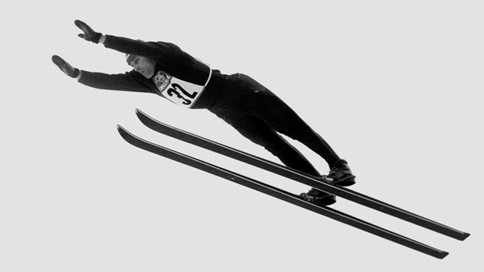
(Photo: HORSTMUELLER GmbH, copyright. Reproduced with permission.)
This style was primarily used until the 1960s and athletes managed to jump up to 140 meters. In the 50s and 60s some jumpers modified the technique by holding the same position of the body but putting the arms next to the body. This widened the body surface and wind buffer. In the 70s it became the dominant technique in the World Cup. The most famous athlete using the so called “parallel style” was Toni Innauer. He was so aesthetic with this style that he is the only jumper in history to reach maximum (5×20) posture rating. The season 1988/1989 changed ski jumping very heavily. A Swedish jumper named Jan Böklov accidently figured out a better ski jumping technique during a practice. His skis which were supposed to be parallel moved apart forming a V. This jump went way further than the ones he did with parallel, so he started using the “V style” which is currently used. During the season 88/89 he lost a of posture points because the rules stated that the skis had to be parallel. Yet he jumped so much further that he compensated for those points and won the overall world cup. Other jumpers started to copy him in the following season because they saw the potential of the technique, yet it took until the season 92/93 before the FIS changed the rules. The V gives the jumpers a bigger air buffer, which works like an airplane. This was the key change in technique towards longer jumps. It is still used in today’s competitions as seen in the picture below showing Peter Prevc.
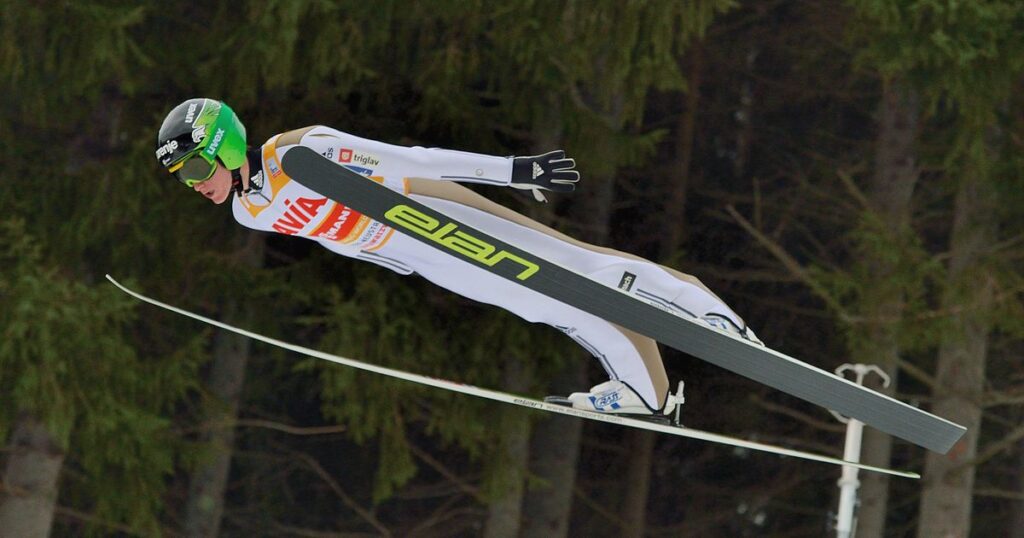
(Photo: Wladyslaw Sojka, Public Domain)
FLYING HILLS:
The most important factor leading to longer distances is the size of the jumping hill which determines the general range of length. Every hill has a K point, which means construction point and a hill size (HS) which is the longest jump which is safe to land. There are different classifications of hill sizes. Through time the respective distances adapted.

Many ski jumping areas have a small, medium, normal and large hill for training and competition purposes. Small and medium are mostly used for young jumpers. Normal and large are both for professional training and official competitions. Flying hills are only used for official competitions and official training. This means they are only used for special occasions like World Cups and world championships. There are only four regularly used flying hills in the world at the moment. Vikersund and Planica are the larger flying hills where world records are possible as seen in the table below. Oberstdorf and Bad Mitterndorf have 5 meters HS less which makes a big difference.
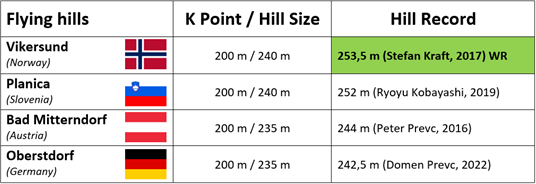
Looking back in history, the first permanent ski jumping hill was the Husebybakken in Norway in 1879. It hosted annual competitions with jumps up to 20 meters. In 1992 they moved to Holmenkollen in Oslo and the competition officially became King`s cup. Throughout the next 30 years many hills were built around Europe and the United States. The world record moved up to 70 meters before 1924. In 1924 ski jumping was part of the first Olympic games in Chamonix. The athletes jumped on a K71 hill in Le Mont, France. It took another 10 years until the first official large hill was built in Planica, Slovenia. This hill allowed for distances of 90/95 meters on a regular basis. In 1936 Josef Bradl was the first man to jump over 100 meters in Planica. Until 1950 Planica was the largest hill in the world, holding the world record of 120 meters in 1948. After World War two the hills in Oberstdorf were destroyed and needed to be rebuilt. It took a few years until plans were realized, but then the first flying hill was built in 1950. Seeing this development, the newly built hill in Bad Mitterndorf extended the hill to become a flying hill as well. For the next 15 years the world record, which reached 140 meters by now moved between those two hills. In 1964 Vikersund followed the extensions and became a flying hill. Planica did the same 5 years later in 1969. By 1969, all 4 flying hills used today existed and the world record increased to 160 meters. The real chasing of distance started because the hills were extended multiple times. The first extensions were to K180/K185 for the four hills. In the 80s the last world records were jumped in Oberstdorf and Bad Mitterndorf. After that Planica held all the records for the next 25 years and the first jump over 200 meters by Toni Nieminen in 1994. Vikersund wanted to bring the biggest hill back to Norway hence, they rebuilt their hill to K200 in 2011.
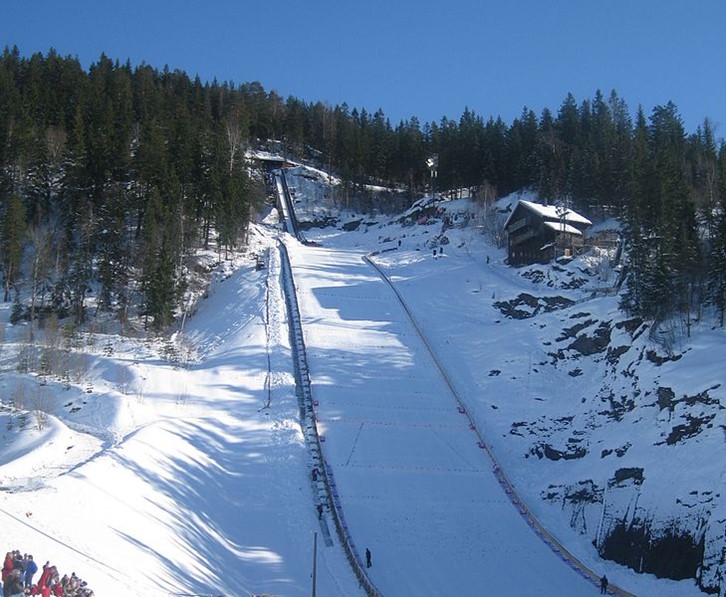
(Photo: Wikimedia commons by Zoggoemila80calgary)
Planica was not happy with that and made plans for an extension which was com pleted in 2015. Bad Mitterndorf extended to K200 for the flying world championship in 2014 and Oberstdorf did the same for 2016. Still the battle for the largest hill lies between Vikersund and Planica. Until now Vikersund holds the world record with 253.5 meters. Looking in the future the FIS paused any hill expansions until further notice. Without a doubt the size of the hills had the greatest impact on ski jumpers chasing distance because it defines the general range how long jumpers can fly.
CONCLUSION:
In conclusion material and technique development helped a great deal to increase distances jumped in the early stages of ski jumping. After the “V style” was established amongst world cup jumpers, basically all improvements in distances resulted from bigger flying hills and minor changes of the suit.
OUTLOOK:
Looking at what happened in the last 30 years, many people are wondering how will ski jumping develop over the next years. There are three main developments. First, how big will flying hills be. As of now there are no concrete plans, but it seems very likely to see jumpers reach 270 meters within the next 5 to 10 years. Second, the technique is shifting away from the “V style” more towards a “H style.” This means that the jumpers open the skis at the back so that the skis form a H. This technique was tested in the wind tunnel and some athletes already use it. Yet it is a very risky style, that’s why many jumpers stick to the V or intermediate between V and H. Third, women´s ski jumping. In 2011/2012 women had their first official world cup events jumping from normal hills. In 2014 a normal hill competition was included in the Olympics and in 2022 they were allowed to jump from large hills in official competitions. The official distance record is held by Yuki Ito with 154 meters. The unofficial record is 200 meters, by Daniela Iraschko, who reached that distance during a practice jump in Bad Mitterndorf. Within the next years it is expected that women will have more competitions from the large hills, possibly also at the Olympics 2026 in Cortina, as well as flying hill competitions.
ACKNOWLEDGEMENT: Thanks to Horst Mueller for letting me use the Helmut Recknagel photograph and thanks to the Holmenkollen Ski museum for sending information and supporting me.
BIBLIOGRAPHY:
“Ausrüstung.“ Berkutschi. https://berkutschi.com/de/front/encyclopedia/ausruestung
“Bad Mitterndorf.“ Skisprungschanzen. http://www.skisprungschanzen.com/DE/Schanzen/AUT-%C3%96sterreich/ST-Steiermark/Bad+Mitterndorf/0031-Tauplitz/
Bösl, P. “Biomechanische Leistungsdiagnostik zum Absprungverhalten im Skisprung: Entwicklung und Evaluation von Messplätzen an der Skisprungschanze und im Labor.“ Reihe Sportwissenschaft. Göttingen Sierke Verlag 2011.
Bösl, P.; Hartung, G.; Huber, A.; Schwirtz, A. “Biomechanische Leistungsdiagnostik im Skisprung an der Schattenbergschanze in Oberstdorf.“ SportStadtKultur. 18. Sportwissenschaftlicher Hochschultag der Deutschen Vereinigung für Sportwissenschaft. Hamburg Czwalina 2007. Pages 149-150.
“Die Geschichte des Skisports.“ SnowTrex. 2021. https://www.snowtrex.de/magazin/urlaub-wintersport/die-geschichte-des-skisports/
Ettema, G. “Dynamics of the In-Run in Ski Jumping: A Simulation Study.” Journal of Applied Biomechanics. 21 (3), September 2005, Pages 247-59.
Fritz, U.; Behrens, S. “ Unendliche Rekordjagd? Wie weit können Skispringer fliegen?“ SWR Sport. 2021. https://www.swr.de/sport/hintergrund/artikel-sport-erklaert-wie-funktioniert-skispringen-100.html
Frenzel, G. “Skispringen: Material, Technik, Verletzungen und Prävention.“ Gots. https://www.gots.org/blog/2020/12/10/skispringen-material-technik-verletzungen-und-praevention/
Gasser, H. “Skisprungschanzen BAU-NORM 2018”. FIS. 2018. https://assets.fis-ski.com/image/upload/v1542377878/fis-prod/assets/Bau-Norm_2018-2.pdf
“Geschichte.“ Skispringen. https://www.skispringen.com/wissenswertes/geschichte/
“Guidelines for the Measuring Procedure.” FIS. 2021. https://assets.fis-ski.com/image/upload/v1623221580/fis-prod/assets/document-library/ski-jumping/Equipment-Guidelines.pdf
Lawson, T. “Building aerodynamics.” London : Imperial College Press ; River Edge, NJ : Distributed by World Scientific Pub. Co., c2001
Michalek, G. “ Die Geburtsstunde des V-Stils.“ Deutschlandfunk. 2013. https://www.deutschlandfunk.de/skisprung-die-geburtsstunde-des-v-stils-100.html
Müller, S. “Optimierung der Absprungbewegung im Skispringen: Untersuchung zur Effektivierung der Absprungbewegung im Skispringen.“ Berlin: Lehmanns Media (Verlag), 2012, 154 S. Zugleich: Leipzig, Universität, Dissertation, 2010 u.d.T.: Untersuchung zur Effektivierung der Absprungbewegung im Skispringen.
“Oberstdorf.“ Skisprungschanzen. http://www.skisprungschanzen.com/DE/Schanzen/GER-Deutschland/BY-Bayern/Oberstdorf/0002-Skiflugschanze/
“Planica.“ Skisprungschanzen. http://www.skisprungschanzen.com/DE/Schanzen/SLO-Slowenien/Planica/0475-Letalnica/
“Skiflugweltrekord.” Wikipedia. 2022. https://de.wikipedia.org/wiki/Skiflugweltrekord
“Ski jumping 101: Olympic history.” NBC Olympics. 2021. https://www.nbcolympics.com/news/ski-jumping-101-olympic-history
“Vikersund.“ Skisprungschanzen. http://www.skisprungschanzen.com/DE/Schanzen/NOR-Norwegen/30-Viken/Vikersund/0005-Skiflygingsbakke/
Virmavirta, M.; Isolehto, J.; Komi, P.; Brüggemann, G.; Müller, E.; Schwameder, H. “Characteristics of the early flight phase in the Olympic ski jumping competition.” Journal of Biomechanics Volume 38, Issue 11, November 2005, Pages 2157-2163.
Waldmüller, R. “Der Schanzenspezialist: Allgäuer baut weltweit Skisprungschanzen.“ BR. 2022. https://www.br.de/nachrichten/bayern/der-schanzenspezialist-allgaeuer-baut-weltweit-skisprungschanzen,T0QCjyz
“Wie ein Immenstädter vor 70 Jahren das Skispringen revolutionierte.“ Allgäuer Zeitung. 2019. https://www.allgaeuer-zeitung.de/sport/wie-ein-immenstaedter-vor-70-jahren-das-skispringen-revolutionierte_arid-14054
